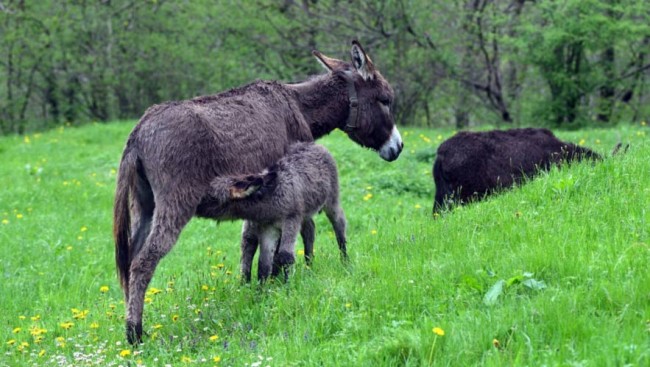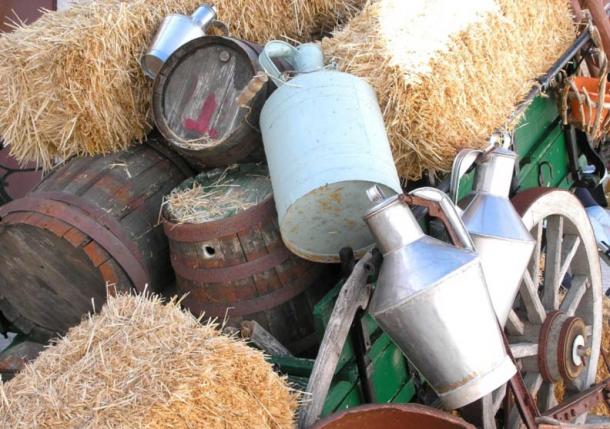Donkey Milk: The Ancient Medicine That’s Making a Comeback

Donkey milk is the closest known milk to human breast milk, and is reported to contain bacterial agents that are 200 times more active than in cow’s milk.
Hailed as an ancient cure for various ailments and an anti-aging, skin-rejuvenating tonic, the medicinal qualities of donkey milk were first proclaimed by Hippocrates, the founder of modern medicine.
Donkey milk was recommended by Hippocrates as a treatment for liver problems, fevers, infectious diseases, poisoning, joint pains, nose bleeds, poisoning, joint pains, and wounds. He wasn’t the only one who believed in the healing power of donkey milk.
Queen of ancient Egypt, Cleopatra reportedly bathed in donkey milk everyday to preserve her youth and beauty, a habit which required the milk of 700 asses to sustain.
According to Roman author Gaius Plinius Secundus, another major advocate of donkey milk baths was the wife of Roman Emperor Nero, who would have whole troops of donkeys accompany her on journeys so that she could bathe in the milk. Pauline Bonaparte (1780–1825 AD), sister of Napoleon, was also reported to have used ass milk for her skin’s health care.

TABLE OF CONTENTS
Donkey Milk as Medicine
As previously stated, Greek physician Hippocrates, who lived to be 90 years old (460 – 370 BC), prescribed ass milk as a treatment for liver problems, fevers, infectious diseases, poisoning, joint pains, nose bleeds, poisoning, joint pains, and wounds.
Roman historian Gaius Plinius Secundus (23 – 79 AD) wrote extensively about the health benefits of donkey milk in his encyclopedic work Naturalis Historia, volume 28. In addition to the range of conditions that Hippocrates would prescribe the milk, Gaius added to the list fatigue, eye stains, weakened teeth, face wrinkles, ulcerations, asthma and gynecological troubles.
In Paris, France during the 1800’s, donkey milk was used to assist in the treatment of children who had contagious or congenital diseases. The Popular Science Monthly, Volume 22, writes:
“The infants were at first fed with goat’s milk, but it was soon found that ass’s milk was better for them; and they are now all fed with milk which they draw directly from the teat of the animal. One, two, and sometimes three children are presented to the ass at the same time, being held at the teat in the arms of the nurse, and the operation is performed with wonderful ease. Numbers speak most eloquently of the success of the method. During six months, eighty-six children afflicted with congenital and contagious diseases were fed at the nursery. The first six were fed, by stress of particular circumstances, with cow’s milk from the bottle; only one of them recovered. Forty-two were nursed at the teat of the goat; eight recovered, thirty-four died. Thirty-eight were nursed at the teat of the ass; twenty-eight recovered, ten died. In the face of such results there can be hardly any hesitation in declaring that in hospitals, at least, the best method of feeding new-born children, who cannot, for any reason, be confided to a nurse, is to put them to suck directly from the teat of an ass.”
Milk Allergies? Why Donkey Milk is Better
The UN’s Food and Agriculture Organization had acknowledged that donkey milk has “particular nutritional benefits”, with a protein profile that may make it more suitable for those allergic to cow’s milk, according to The Telegraph.
A study published in 2013 is likely the evidence that the UN saw before acknowledging donkey milk’s specific benefits. After investigating whether or not children who were allergic to cow’s milk could tolerate ass milk instead, researchers had this to say: “As a result of careful analysis of literature, is beyond doubt the AM usefulness as substitute for breast milk in infants suffering from CMPA or multiple food allergies included CMPA.”
The Science Behind Donkey’s Milk
What makes donkey’s milk special is that, like humans , donkeys have a single stomach. Most people drink the milk of animals that have multiple stomachs, such as cows and goats. The digestion process in multi-stomached grazing animals is much different, as they utilize large amounts of bacteria to ferment and digest their food.
Donkey milk, with it’s low casein content and rich vitamin profile, is the closest known milk to human breast milk. It is reported to contain bacterial agents that are 200 times more active than in cow’s milk. This is likely the reason why the milk of a donkey contains surprisingly low levels of bacteria.
Dr Photis Papademas is a lecturer in dairy science and has been interviewing people who’ve been drinking milk from the farm regularly over a period of two to three months. “From what they say, they’ve had some remarkable results, especially children with asthma or coughs and for some with eczema and psoriasis,” says Dr Papademas.
‘As a scientist I’m always cautious, but this milk looks promising,’ he says.

The Ancient Elixir Returns!
With all these known benefits of donkey milk, why isn’t it available in every grocery store?
The answer lies in its production. At an average yield of only 0.3 litres of milk per day, donkey’s produce 30 times less milk than a cow. What’s more is that “a donkey won’t produce milk unless it’s stimulated by the presence of its foal, and milking has to be done manually,” added DailyMail.
Because of the difficulty of producing donkey milk in large amounts, it sells for an extremely high price, €24 (approx. $30) a litre in Cyprus, and in other European countries the price is double. In South America, donkey milk is fairly popular and can be purchased from street vendors.
One of the most fascinating donkey milk producers is Ricardo Alegria of Chile. For more than 25 years, Ricardo and his brother Marco have been milking donkeys on the spot and selling it to customers. Although the price is high, the benefits are potent, and as the people at Golden Donkeys Farm in Cyprus have said, 60ml a day is all that you need to protect your body.
Resources Used:
